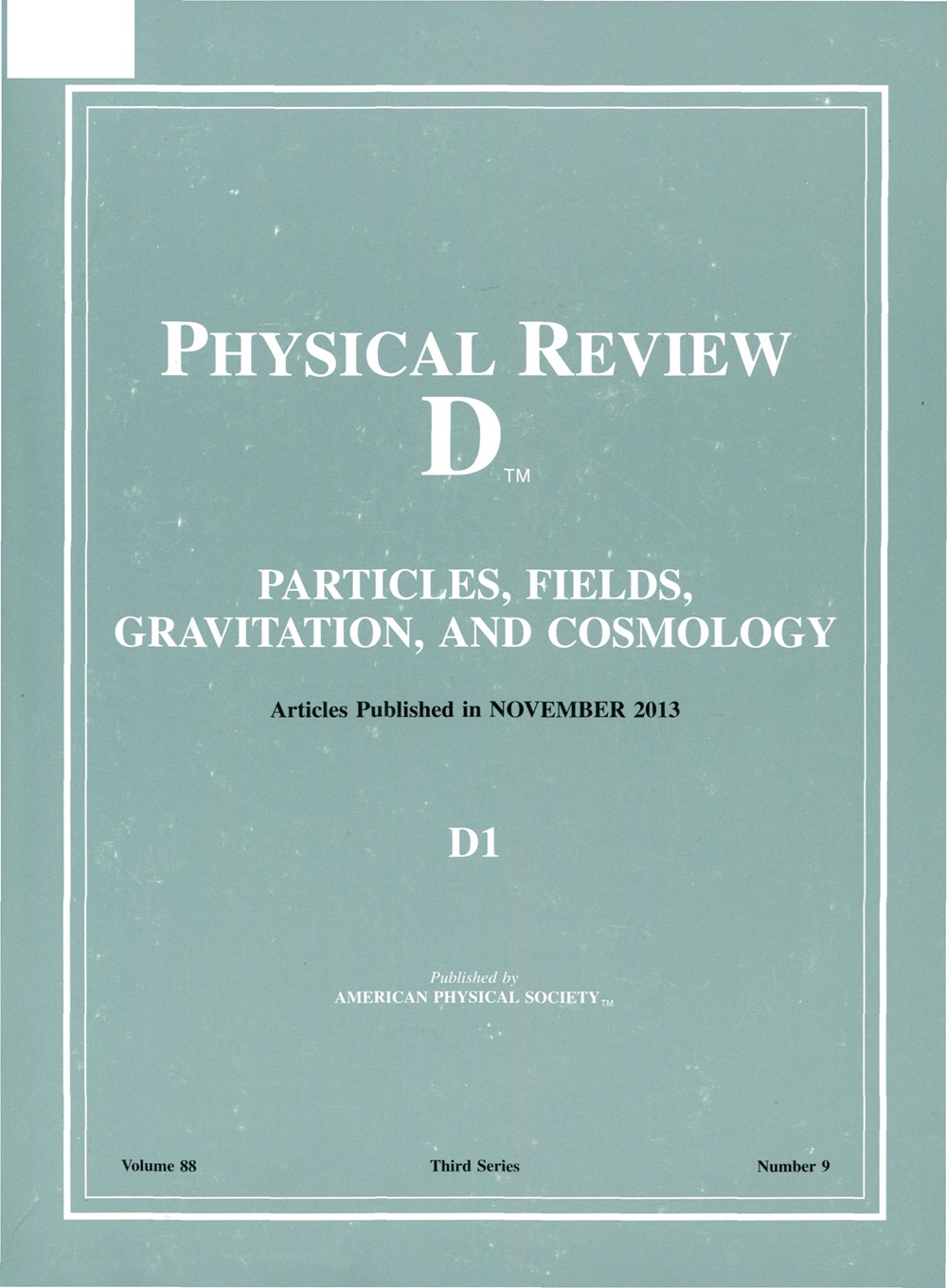LQCD模拟约束的手性旋涡催化
IF 5.3
2区 物理与天体物理
Q1 Physics and Astronomy
引用次数: 0
摘要
最近在重离子碰撞实验中发现了涡旋效应的证据,为量子色动力学(QCD)的相图提供了新的见解。考虑到旋转的影响,晶格QCD数据表明,解除约束和恢复手性对称性的温度随着实际角速度的增加而增加,并且主要影响与胶子自由度有关。这些发现可能对缺乏胶子相互作用的旋转系统中的夸克模型至关重要,该模型可以预测手性温度转变随角速度的降低。为了更好地解决这一问题,本文采用双味Nambu-Jona-Lasinio模型,在平均场近似下研究了具有恒定角速度的旋转刚体的相图。为了避免胶子的缺失,我们提出应用依赖于角速度的有效耦合,通过晶格QCD数据拟合模型中手性相变的伪临界温度。我们的研究结果表明,运行耦合诱导手性凝聚物作为角速度的函数增强,加强了手性对称性的破坏,这种效应以前被称为手性涡催化。对于手性磁化率,当考虑运行耦合时,我们观察到在转变温度周围有更强的波动。这些发现将临界终点(CEP)转移到更高的温度和化学势,从而影响了相图。2025年由美国物理学会出版本文章由计算机程序翻译,如有差异,请以英文原文为准。
Chiral vortical catalysis constrained by LQCD simulations
Evidences of vortical effects have been recently found by experiments in heavy ion collisions, instigating new insights into the phase diagram of quantum chromodynamics (QCD). Considering the effect of rotations, lattice QCD data shows that the temperatures for deconfinement and chiral symmetry restoration should increase with real angular velocity, and the dominant effects are related to gluonic degrees of freedom. These findings could be essential for quark models in rotating systems that lack gluonic interactions, which predicts the decreasing of the chiral temperature transition with the angular velocity. To address this issue properly, in this work we apply the two-flavor Nambu–Jona-Lasinio model to explore the phase diagram in a rotating rigid cylinder with constant angular velocity in the mean field approximation. To circumvent the absence of gluons, we propose the application of an effective coupling dependent of the angular velocity, fitted to match the pseudocritical temperature of chiral phase transition in the model through lattice QCD data. Our results indicate that the running coupling induces the enhancement of the chiral condensate as a function of angular velocity, strengthening the breaking of chiral symmetry, an effect previously dubbed as chiral vortical catalysis. For the chiral susceptibility we observe stronger fluctuations around the transition temperature when we consider the running coupling. The phase diagram is affected by these findings shifting the critical end point (CEP) to higher temperatures and chemical potentials. Published by the American Physical Society 2025
求助全文
通过发布文献求助,成功后即可免费获取论文全文。
去求助
来源期刊

Physical Review D
物理-天文与天体物理
CiteScore
9.20
自引率
36.00%
发文量
0
审稿时长
2 months
期刊介绍:
Physical Review D (PRD) is a leading journal in elementary particle physics, field theory, gravitation, and cosmology and is one of the top-cited journals in high-energy physics.
PRD covers experimental and theoretical results in all aspects of particle physics, field theory, gravitation and cosmology, including:
Particle physics experiments,
Electroweak interactions,
Strong interactions,
Lattice field theories, lattice QCD,
Beyond the standard model physics,
Phenomenological aspects of field theory, general methods,
Gravity, cosmology, cosmic rays,
Astrophysics and astroparticle physics,
General relativity,
Formal aspects of field theory, field theory in curved space,
String theory, quantum gravity, gauge/gravity duality.
 求助内容:
求助内容: 应助结果提醒方式:
应助结果提醒方式:


